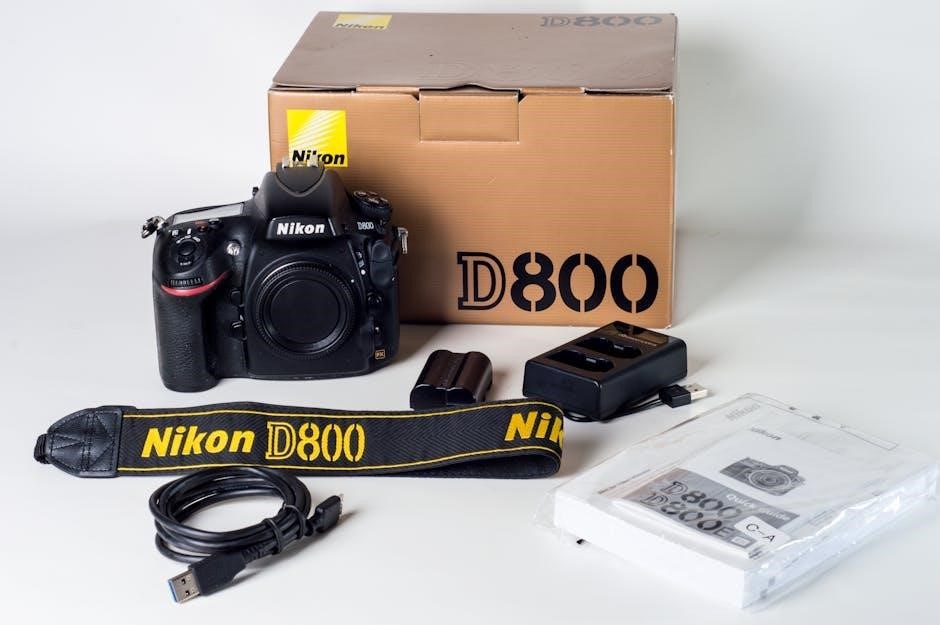
Welcome to the comprehensive guide for your weed eater! This manual provides essential information for safe operation, effective use, and proper maintenance of your device.
Understanding the Purpose of a Weed Eater
A weed eater, also known as a string trimmer, is designed to cut grass, weeds, and small vegetation in areas inaccessible to lawn mowers. It uses a rotating string to trim and tidy gardens, lawns, and edges. Versatile and efficient, weed eaters are ideal for maintaining neat outdoor spaces. They can also function as edgers or brush cutters with the right attachments. Regular use ensures clean, professional-looking landscapes, making them essential for homeowners and gardeners seeking precision and ease in yard maintenance.
Importance of Reading the Manual
Reading the weed eater manual is crucial for understanding its operation, safety, and maintenance. It provides detailed instructions on assembly, usage, and troubleshooting, ensuring optimal performance. The manual highlights safety precautions to prevent accidents and explains how to handle common issues. By following the guidelines, users can extend the lifespan of the device and avoid costly repairs. It also helps users familiarize themselves with the tool’s features, enabling efficient and effective use. A well-informed user achieves better results while maintaining safety standards.
Key Features of a Weed Eater
A weed eater typically features a lightweight design for easy maneuverability and a powerful engine or motor for efficient cutting. It includes a rotating cutting head with adjustable speed settings, allowing users to customize the trimmer’s performance. Many models come with interchangeable attachments, such as blades or nylon lines, to tackle various tasks. The device often includes an adjustable handle for ergonomic use and a shoulder strap for added support. Some advanced models offer battery-powered convenience or eco-friendly options, making them versatile tools for lawn maintenance.

Safety Precautions
Always wear protective gear, including gloves, safety glasses, and sturdy footwear. Ensure the area is clear of obstacles and bystanders. Avoid operating near open flames or sparks.
General Safety Guidelines
Always inspect the weed eater before use to ensure all parts are secure and functioning properly. Avoid wearing loose clothing that could get caught in the machine; Keep children and pets at a safe distance while operating. Never use the device in wet conditions or near water sources. Maintain a firm grip and avoid overreaching, which could cause loss of control. Ensure the area is clear of debris and obstacles. Follow all safety guidelines to minimize risks and ensure safe, effective operation.
Protective Gear Recommendations
Wear safety glasses or goggles to protect your eyes from debris. Use gloves to improve grip and prevent hand injuries. A long-sleeved shirt and pants can shield skin from cutting lines or thorns. Closed-toe shoes or boots are essential to prevent foot injuries. A dust mask may be necessary when working in dusty areas. Ensure all gear fits properly and does not obstruct movement. Using protective equipment minimizes risks and ensures a safer experience while operating the weed eater.
Operating in Safe Environments
Always operate the weed eater in well-ventilated areas, avoiding flammable materials like dry leaves or gasoline. Keep bystanders, especially children and pets, at a safe distance. Avoid using the device during strong winds or wet conditions, as this increases the risk of accidents. Clear the area of debris before starting. Be cautious on uneven or sloped terrain to prevent slips. Never operate near power lines or overhead obstacles. Ensure the environment is free from hazards that could interfere with safe operation.

Assembly and Parts Identification
Proper assembly and identifying parts are crucial for safe and effective weed eater operation. Follow the manual to ensure all components are correctly installed and recognized.
Unpacking and Inventory
When unpacking your weed eater, carefully remove all components from the box to avoid damage. Check for the trimmer unit, cutting line, handle, guard, and any additional accessories. Refer to the manual’s inventory list to ensure all parts are included. Inspect each item for visible damage or defects. If any components are missing or damaged, contact the manufacturer immediately. Properly organizing the parts will make assembly easier and ensure a smooth setup process for first-time use.
Step-by-Step Assembly Guide
Begin by attaching the handle to the main shaft, ensuring it is securely fastened with the provided screws. Next, align the guard and clamp it firmly to protect against debris. For string trimmers, wind the cutting line onto the spool according to the manual’s instructions. If your model includes a blade, mount it carefully, following safety guidelines. Tighten all connections to prevent loosening during use. Double-check that all parts are properly aligned and secured before powering on the device. Refer to the manual for specific assembly instructions tailored to your weed eater model.
Identifying Key Components
Your weed eater consists of essential parts that ensure proper functionality. The engine or motor powers the device, while the cutting head houses the trimming mechanism. The shaft connects the motor to the cutting head, transmitting power. The handle provides control, and the guard protects you from debris. Additional components may include a trimmer line or blade, depending on your model. Familiarize yourself with these parts to understand how they work together and ensure safe, efficient operation. Always refer to your manual for model-specific components.
Operating Instructions
Start the weed eater, hold it firmly, and maintain proper posture. Keep the cutting head parallel to the ground and adjust settings as needed for optimal performance.
Starting and Stopping the Weed Eater
To start, ensure the area is clear of debris and people. For gas models, check fuel levels and prime the engine if necessary. Pull the choke, then the starter cord until it ignites. For electric models, plug in and press the trigger. To stop, release the trigger, allow the blade to stop, and turn off the engine or unplug. Always follow proper shutdown procedures to avoid accidents. Keep children and pets away during operation. Store the device safely after cooling down.
Adjusting the Trimmer Head Speed
Adjusting the trimmer head speed optimizes performance for different tasks. For most models, use the variable speed trigger to increase or decrease RPM. Thicker weeds require higher speeds, while lighter growth needs lower settings. Some units have a fixed speed, so check your model. Adjustments ensure efficient cutting without overheating. Monitor speed during use and modify as needed to maintain blade efficiency. Proper speed control extends tool lifespan and enhances cutting precision for various terrain and vegetation types.
Basic Cutting Techniques
Mastering basic cutting techniques ensures efficient weed trimming. Hold the trimmer at a 20- to 40-degree angle, keeping the cutting head parallel to the ground. Sweep the trimmer in a steady, back-and-forth motion, maintaining consistent contact with the surface. Avoid applying too much pressure, as this can bog down the tool. Work in small sections, overlapping slightly to prevent missed spots. Keep the trimmer at a slight angle to achieve even cutting and avoid scalping the ground. This method ensures thorough weed removal while preserving lawn health.

Maintenance and Care
Regularly clean the weed eater, store it in a dry place, and sharpen or replace the blade as needed to ensure optimal performance and longevity.
Cleaning the Weed Eater
Regular cleaning is essential for maintaining your weed eater’s performance. Always turn off and unplug the device before cleaning. Remove any cutting lines or blades and wipe down the exterior with a dry cloth. Use a brush to clear debris from the trimmer head and guard. Inspect for damage and wear. For tougher grime, dampen a cloth with mild soap and water, but avoid soaking electrical components. Dry thoroughly after cleaning to prevent rust and ensure proper function. Regular maintenance prolongs the life of your tool and ensures safe operation.
Storing the Device Properly
Proper storage ensures your weed eater remains in good condition. Store it in a dry, cool place, away from direct sunlight and moisture. Hang the tool securely or place it on a flat surface to prevent damage. Remove and store cutting lines or blades separately to avoid tangling or rust. For gas-powered models, drain the fuel tank or use a fuel stabilizer to prevent corrosion. Cover the device with a protective bag or wrap to shield it from dust and debris. Proper storage extends the lifespan and maintains performance.
Sharpening or Replacing the Blade
A dull blade reduces efficiency and can damage the weed eater. Sharpen the blade regularly using a file or grinder, maintaining the original angle. Avoid overheating during sharpening, as it can weaken the metal. If the blade is damaged or worn beyond sharpening, replace it with a manufacturer-approved part. Always disconnect the spark plug before performing maintenance. Refer to your manual for specific instructions, as blade types vary. Proper blade care ensures optimal performance and extends the tool’s lifespan, keeping your yard work efficient and safe.
Replacing the Cutting Line
To replace the cutting line, turn off the weed eater and let it cool. Cut a new line to the recommended length, usually between 6-25 feet, depending on your model. Remove the spool by pressing the locking tab. Wind the new line clockwise around the spool, leaving a small portion unwound. Secure the line in the notch and reattach the spool. Ensure the line is not too tight or loose. Trim excess line with scissors and test the tool to ensure proper cutting. Always use the correct line type for your weed eater to maintain performance and safety.

Troubleshooting Common Issues
Identify and resolve common problems like engine issues, clogged lines, or overheating by checking fuel, air filters, and line feed. Ensure proper maintenance for optimal performance. Always refer to the manual for specific solutions and safety precautions to avoid further damage. Regular checks can prevent many issues, ensuring your weed eater runs smoothly and efficiently throughout the season. Keep the cutting area clear and follow manufacturer guidelines for troubleshooting specific models. If problems persist, contact the manufacturer for professional assistance. Proper care and attention can extend the life of your weed eater, reducing the need for frequent repairs. Stay safe while troubleshooting to avoid accidents.
Why the Trimmer Won’t Start
If your weed eater won’t start, check the fuel level and ensure it’s fresh and the correct type for your model. Verify the spark plug is clean or replaced if damaged. Check the air filter for cleanliness or blockages. Ensure the choke is properly adjusted and the throttle is in the correct position. Make sure the cutting line isn’t tangled or clogged. Refer to your manual for specific troubleshooting steps tailored to your model. If issues persist, contact the manufacturer for assistance. Always follow safety guidelines when diagnosing and repairing your trimmer. Proper maintenance can help prevent startup problems in the future.
Issues with the Cutting Line
Common problems with the cutting line include tangling, clogging, or breaking excessively. Regularly check the line for damage or debris. If tangled, release the spool and gently untangle the line. Ensure the line is the correct size and type for your trimmer. Avoid using line that’s too thick or too thin, as this can cause poor performance or frequent breakage. Replace worn or frayed line promptly to maintain efficiency. Always follow the manufacturer’s guidelines for line replacement to ensure optimal performance and safety while operating your weed eater.
Overheating Problems
Overheating issues with your weed eater can arise from blocked air vents, excessive use, or insufficient lubrication. Regularly clean the air filter and vents to ensure proper airflow. Avoid continuous operation without breaks, as this can strain the engine. Use the correct type of oil recommended by the manufacturer to prevent overheating. If the problem persists, inspect for blockages in the cooling system or faulty spark arresters. Always allow the engine to cool before storing or servicing to prevent damage. Refer to the manual for specific cooling system maintenance tips.

Advanced Tips for Effective Use
Mastering advanced techniques like optimal cutting angles and efficient edging can significantly enhance your weed eater’s performance. Regularly maintain the equipment and use appropriate accessories for best results.
Optimizing Cutting Efficiency
To maximize your weed eater’s performance, maintain the correct cutting angle and ensure the blade or string is at the recommended length. Keep the device at a 20-30 degree angle to avoid damaging plants. Regularly clean debris from the cutting head and sharpen or replace worn blades. Use steady, sweeping motions rather than applying too much pressure, which can reduce efficiency. Properly balancing the machine and maintaining sharp components will help achieve cleaner cuts and extend the tool’s lifespan.
Using Different Attachments
Many weed eaters support interchangeable attachments, enhancing versatility for various tasks. Common attachments include different cutting heads, blades, and specialized tools for edging or pruning. Always follow the manufacturer’s instructions for installation and use. Experiment with attachments to find the best fit for your landscaping needs. Regularly inspect and maintain attachments to ensure optimal performance. Properly securing attachments prevents accidents and extends equipment lifespan. This feature allows you to tackle multiple jobs with a single device, making it a cost-effective solution for yard maintenance.
Edging and Trimming Techniques
Mastering edging and trimming techniques enhances your weed eater’s effectiveness. For clean edges, use a guide or adjust the cutting head at a slight angle. Maintain consistent blade height to avoid uneven cuts. When trimming, overlap passes slightly to ensure uniformity. For tight spaces, use a narrow trimming path. Always cut in the same direction to prevent spreading debris. Regularly inspect the blade or line for wear. Proper techniques ensure precise results and extend the life of your equipment.

Environmental Considerations
Adopt eco-friendly practices to minimize environmental impact. Always dispose of trimmings responsibly and avoid using chemicals near water sources. Regular maintenance ensures optimal efficiency and reduces emissions.
Eco-Friendly Usage Tips
To minimize environmental impact, use your weed eater responsibly. Opt for cordless models to reduce carbon emissions and energy consumption. Regularly maintain the device to ensure efficiency. Avoid over-trimming vegetation, as this can harm local ecosystems. Dispose of trimmings and debris properly, composting when possible. Refrain from using chemical herbicides, which can pollute soil and water. Choose eco-friendly accessories, such as biodegradable cutting lines, to further reduce your ecological footprint. By adopting these practices, you contribute to a greener and more sustainable environment while maintaining your yard effectively.
Proper Disposal of Waste
Dispose of weed eater waste responsibly to protect the environment. Collect trimmings and debris in a designated bin or compost pile. Metal blades and plastic parts should be recycled at approved facilities. Avoid tossing hazardous materials like batteries or fuel in regular trash. Check local regulations for proper disposal methods. Composting organic waste reduces landfill use and creates nutrient-rich soil. Ensure all materials are sorted and handled correctly to minimize environmental impact and promote sustainable practices.

User Manual Guide
This section provides a comprehensive overview of the weed eater’s features, operation, and maintenance. It helps users navigate the manual effectively and access essential information quickly.
Navigating the Manual
The manual is organized into clear sections for easy navigation. Start with the table of contents to locate specific topics quickly. Use the index for keyword searches. Each section provides detailed instructions, diagrams, and troubleshooting tips. Familiarize yourself with the layout to find information efficiently. Refer to numbered pages or bookmarks for quick access to key areas like assembly or maintenance. This structured approach ensures users can find guidance effortlessly, making operation and troubleshooting straightforward and stress-free.
Understanding Safety Symbols
The manual uses safety symbols to highlight critical information. These symbols, such as warning, caution, and danger signs, are standardized to ensure clarity. They alert users to potential hazards, such as sharp blades or hot surfaces. Familiarize yourself with these symbols to understand risks and follow safety protocols. The manual often includes a glossary or reference section explaining each symbol in detail. Always pay attention to these visual cues to ensure safe operation and avoid accidents while using the weed eater.
Referencing the Manual for Specific Models
Always consult the manual specific to your weed eater model for accurate instructions. Manuals are tailored to address features, maintenance, and troubleshooting unique to each model. Use the model number, found on the product or packaging, to locate the correct manual. Online databases and manufacturer websites often provide downloadable versions. Ensure compatibility by cross-referencing the model number with the manual’s details. This ensures proper guidance for your device, optimizing performance and safety. Regularly check for updates or revised manuals from the manufacturer.

Additional Resources
Explore manufacturer websites for official guides, troubleshooting, and FAQs. Online forums and YouTube offer repair tips and user experiences, enhancing your weed eater knowledge;
Online Manuals and Guides
Official manufacturer websites provide downloadable PDF manuals and guides for specific weed eater models. These resources include detailed instructions, troubleshooting tips, and video tutorials. Online platforms like YouTube offer demonstration videos for assembly, maintenance, and operation. Additionally, forums and blogs share user experiences and repair advice. Accessing these online resources ensures you have comprehensive support for optimal performance and maintenance of your weed eater. They are easily searchable and accessible, making it convenient to resolve issues or learn new techniques.
Manufacturer Support and Contact
Manufacturer support is available through various channels, including phone, email, and live chat. Visit the official website for contact details and support options. Representatives can assist with troubleshooting, repair guidance, and warranty inquiries. They also provide information on spare parts and maintenance tips. For specific models, contacting the manufacturer ensures accurate and reliable advice. This support is essential for resolving issues quickly and maintaining your weed eater’s performance. Always refer to the contact information provided in your user manual for direct assistance.
Community Forums and Videos
Community forums and videos offer valuable peer-to-peer advice and visual guides for weed eater usage. These resources provide real-world tips, troubleshooting solutions, and creative techniques shared by experienced users. Videos often demonstrate step-by-step instructions for maintenance, assembly, and advanced cutting methods. Engaging with these communities can enhance your understanding and improve your skills. Many forums also allow users to ask questions and share their own experiences, creating a supportive environment for learning. These resources complement the manual, offering practical insights from fellow users.

Future Trends in Weed Eater Technology
Advancements in battery power, smart technology, and eco-friendly designs are shaping the future of weed eaters, promising more efficient, sustainable, and user-friendly tools for lawn maintenance.
Advancements in Battery Power
Future weed eaters will benefit from enhanced battery technology, including higher energy density and faster charging times. Lithium-ion batteries are expected to dominate, offering longer runtime and reduced weight. Improved thermal management systems will prevent overheating, ensuring consistent performance. Developers are also exploring solid-state batteries for even greater efficiency and safety. These advancements will make cordless weed eaters more reliable and powerful, reducing downtime and increasing productivity for users. Battery-powered tools are poised to become the standard for eco-conscious and efficient lawn maintenance.
Smart Technology Integration
Modern weed eaters are increasingly incorporating smart technology to enhance performance and user experience. Features like app connectivity allow users to monitor battery life, adjust settings, and receive maintenance alerts. Some models utilize AI to optimize cutting efficiency based on terrain and vegetation type. Smart sensors detect blade wear and automatically adjust cutting heights. These innovations simplify operation, improve precision, and extend tool longevity. Smart technology integration is revolutionizing weed eaters, making them more efficient and user-friendly for gardeners of all skill levels.
Eco-Friendly Innovations
Modern weed eaters now feature eco-friendly innovations to reduce environmental impact. Battery-powered models eliminate emissions, offering a cleaner alternative to gas-powered tools. Energy-efficient designs minimize power consumption, while biodegradable cutting lines reduce plastic waste. Some models incorporate recyclable materials in their construction. Additionally, quieter operation lowers noise pollution, making them ideal for residential use. These eco-conscious advancements promote sustainable gardening practices without compromising performance, aligning with global efforts to reduce carbon footprints and preserve natural resources for future generations.
By following this manual, you’ll master proper techniques, ensuring safe and effective use of your weed eater for years of reliable lawn care and maintenance.
Final Thoughts on Effective Use
Mastering your weed eater’s operation ensures efficient lawn care while maintaining safety. Regular maintenance, proper storage, and adherence to guidelines extend its lifespan. Explore advanced features for optimal performance and consider eco-friendly practices. By following the manual, you’ll achieve professional-grade results while protecting your environment. Safe practices and consistent upkeep are key to enjoying a well-manicured lawn season after season.
Encouragement for Safe Practices
Safety is paramount when using a weed eater. Always wear protective gear, including gloves, safety glasses, and sturdy footwear. Keep loose clothing tied back and avoid operating near bystanders or pets. Regularly inspect the device for damage and ensure all guards are in place. By prioritizing safety, you protect yourself and others while achieving effective results. Remember, safe practices not only prevent accidents but also extend the life of your equipment and ensure a positive experience.